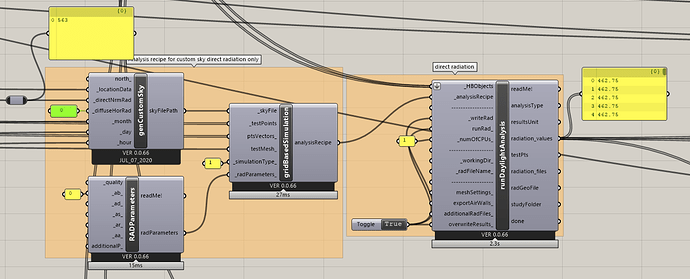One remark:
I’ve figured out that when you enter the direct normal radiation, the output of the Radiance calculation is indeed the direct horziontal radiation.
If I’m correct: when the entered direct normal irradiance is 563, and the zenith of this particular hour is 35 degrees, then the direct horziontal irradiance is indeed 462.75 according to the formula below:
DHI = cos(zenith)*DNI
However, I’m still puzzled about what causes the difference between MRT with the legacy method and LBT method as well as how to seperate the ground reflected irradiance from the overall irradiance. So I would still very much appreciate any help with these questions! Thanks in advance
